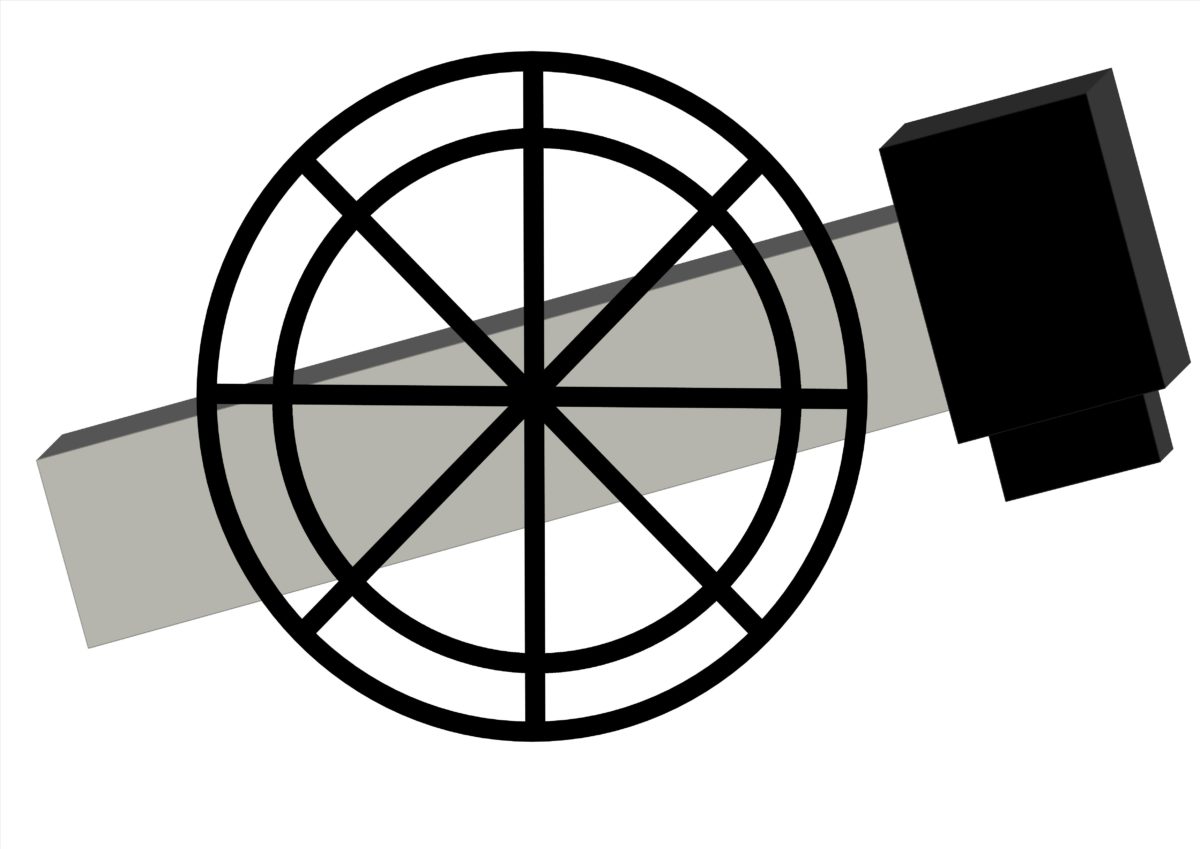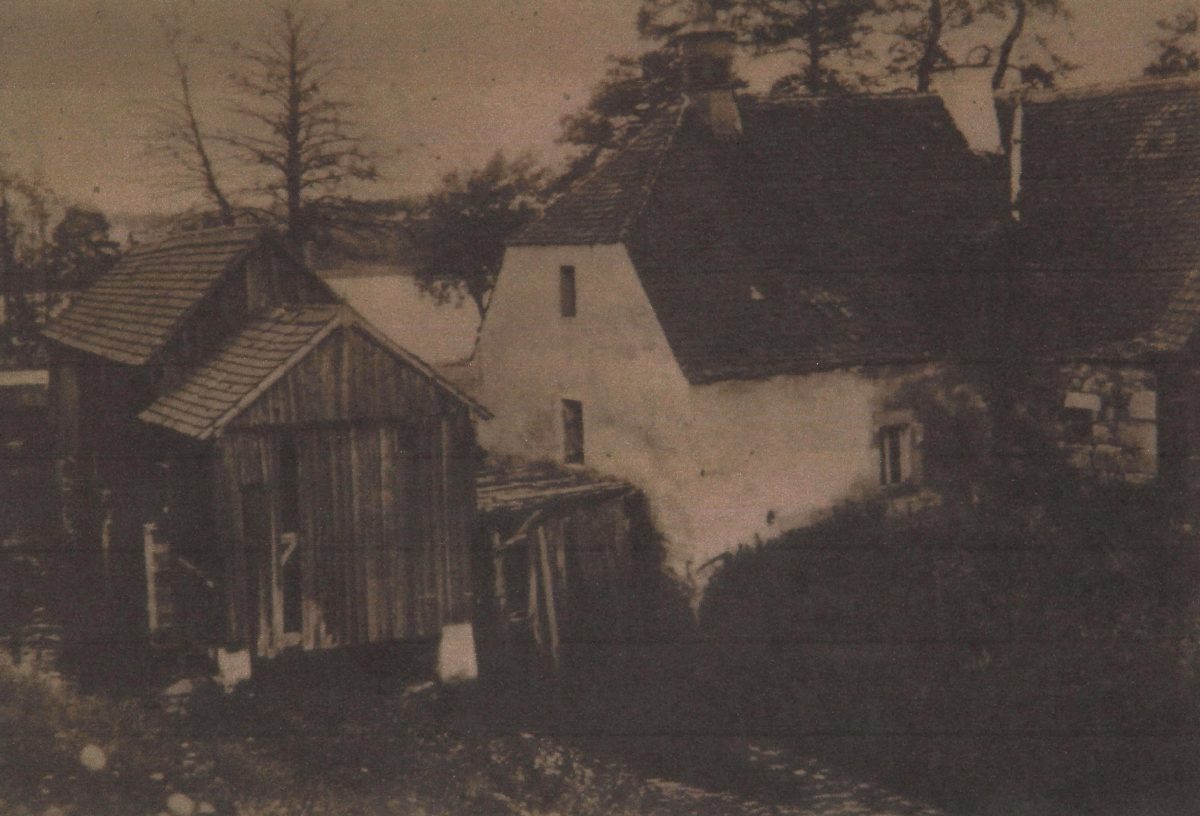Schaumbachmühle
Idyll in the green
The Schaumbachmühle, like the Felsmühle and the Stadtmühle, probably originated very early and was first mentioned in a document in the tax book of 1567. Situated southeast of Grafenwoehr on the Schaumbach stream coming from today’s military training area and flowing into the Creussen, it was the third flour mill in the Grafenwoehr district. Today, at the former location between Geismannskeller and the traffic circle, nothing remains of the old mill and the large estate. Only the street name „An der Schaumbachmühle“ reminds of it. In former times, the road ran here in an S-curve, so that the mill was located on today’s road, the Schaumbach flowed further north. The mill drew its water power from the dammed Schaumbachweiher, formerly also called Mühlweiher, at the outlet of which it was located. Today, separate sewage ponds west of the main road give a hint of the former large pond.
Family owned for centuries
At the end of the 17th century, Erhard Hofmann is recorded as the Schaumbach miller, followed by Kaspar Brunner in 1741. For centuries, the Speckner family was closely connected with the Schaumbachmühle. Even before 1760, there were two generations of Speckners on the property, and from that year on, the family is recorded without interruption until the mill was replaced in 1907. The last Schaumbach miller Josef Speckner had 11 daughters, the 12th child, the only son, drowned in the mill pond when he was one year old. A special feature was a chapel in honor of the Mother of God, which was already mentioned in documents around 1700.
Illegal use of tobacco
From 1740 an anecdote of the Schaumbach miller has been handed down. He indulged in tobacco consumption. However, smoking foreign tobacco instead of local tobacco was forbidden. The Schaumbach miller preferred the tobacco from abroad and so he had to pay a fine of 10 guilders during an inspection, which was equivalent to a magnificent cow at that time. It probably didn’t hurt him, because millers were usually wealthy. This was also evident in 1796 when the Schaumbach miller of the time helped out the city of Grafenwoehr with 1,000 gulden when it was threatened by fire-raiding troops. The mill, like all the others, was subject to taxation by the Grafenwoehr administration. In addition, Speckner had to pay 2 Kreuzer interest to the town of Grafenwoehr in 1815 for the use of the Schaumbach.
A good reputation until the end
At the beginning of the 20th century, in addition to the mill, the estate included a sawmill and agriculture with farming, cattle farming and fish farming. The wealthy millers were popular throughout Grafenwoehr. Every visitor to the Schaumbachmühle, whether a customer or a beggar, received a large piece of bread – a coveted gift in those days. For the sake of the piece of bread, some inhabitants of Grafenwoehr carried their sack of grain on their shoulder all the way down to the Schaumbach Mill for grinding. For the construction of the military training area, the mill was bought in 1907 from the Bavarian kingdom together with the land from Speckner’s daughter Babette Rauh. The chapel was demolished by a relative and rebuilt in the Kaltenbrunn field. Tenant Johann Uhl, however, continued to manage the property. The last miller Max Lorenz came from Dießfurt and worked there until 1938. In the war year 1940/41, the mill was finally demolished by French prisoners of war.
Schaumbach mill, in the background the Schaumbach pond
© Archive Culture and Military Museum Grafenwoehr
 cycle trail ‚hammer mills & mills‘
cycle trail ‚hammer mills & mills‘